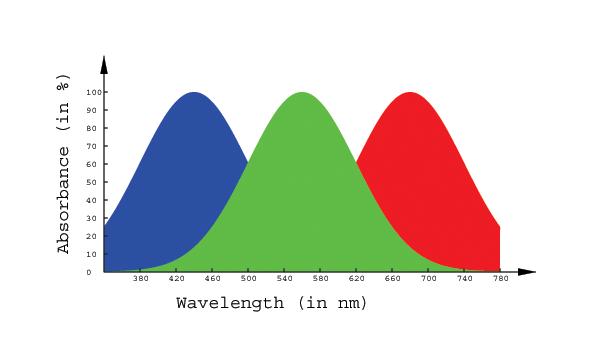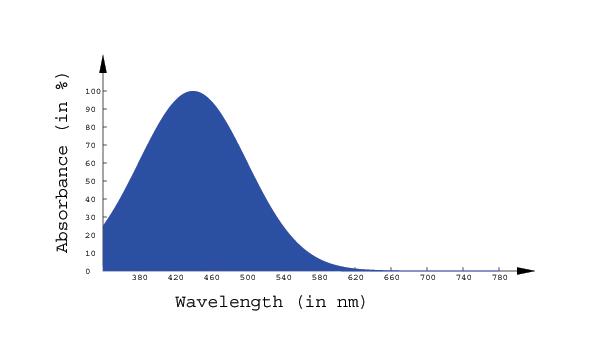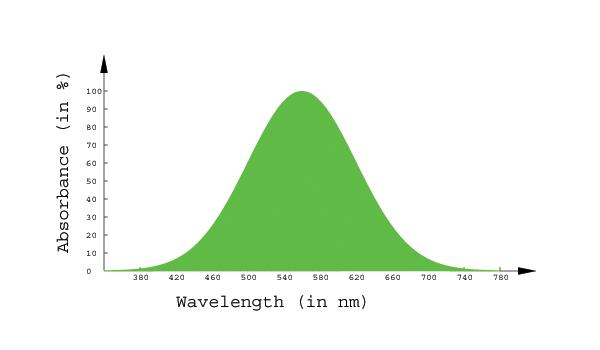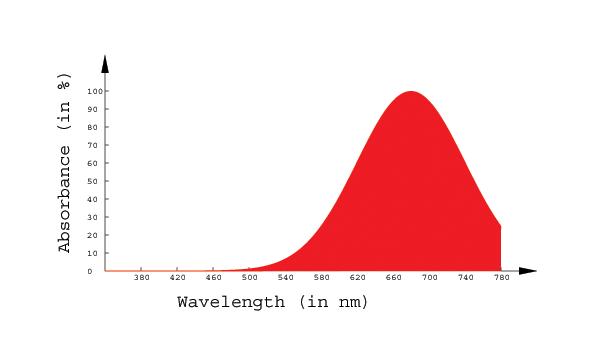Human Vision
As many people know,
"white" light from the sun can be diffracted or split through a prism to
yield a variety of colours. In the real world, this phenomena is
apparent when we see rainbows. In order for our eyes to perceive light,
in general, we have two different receptors in the back of our eye:
cones and rods. Cones and rods have complementary abilities. Rods can
work with a very fast response rate, and are incredibly sensitive at low
light levels. However, they are generally insensitive to colours. As
such, rods form the "black and white" or "contrast" portion of what we
see. Conversely, cones are the "colour" viewing portion of our eyes.
Cones respond to particular wavelengths of light, and give us a highly
detailed coloured view of the world. In order to function though, cones
need more light intensity than rods, so they are limited in low light
levels. In this way, cones tend to be like the "brightness" meter of our
eyes.
Colour
Vision
In cones, there are
pigments that respond to three colours: blue, green and red. Each of
these pigments gets "excited" by a different wavelengths of light to
varying degrees. When each pigments is excited, it sends a message to
your brain, which then matches all these little coloured responses to
make up the coloured world that we see. Here is a sample of what the
pigment responds to. Each of these simplified curves shows the
absorbance of each pigments; the actual absorbance curves are
considerable more complex. The higher the absorbance, the more
excitations occur, and the intensity of that colour (as we observe it)
increases.
As you can see, there
are pigments that absorb heavily at low wavelengths (blue light), medium
wavelengths (green light) and higher wavelengths (red light).
Altogether, these form the limits of light that out eyes can see and
interpret. At lower wavelengths, there is high energy UV light, and at
very long wavelengths there is low energy infared radiation.

An interesting thing to note is that our eyes do not have equal amounts
of each of these three pigments. It turns out that the average human
will have more red and green active pigments than blue responsive
pigments. This happens to be a functional and natural adaptation; it
arises from the fact that our Sun tends to output a lot of light in the
"yellow" range due to the presence of hydrogen in the Sun. Another
thing that is quite interesting is that there is considerable overlap
in the pigments. For example, just under 500 nm, there is still
considerable absorbance by both the blue and the green pigments.
Similarly, around 620 nm, there is considerable overlap between the
green and red pigments. It turns out that our eye determines the colour
we see by mixing together these three primary shades of colour.
Introduction
Colour Vision
Colour Math
Approximations
Focal Lengths and Distances
GRIN Systems
Human Vision
Vision Problems
Corrections


